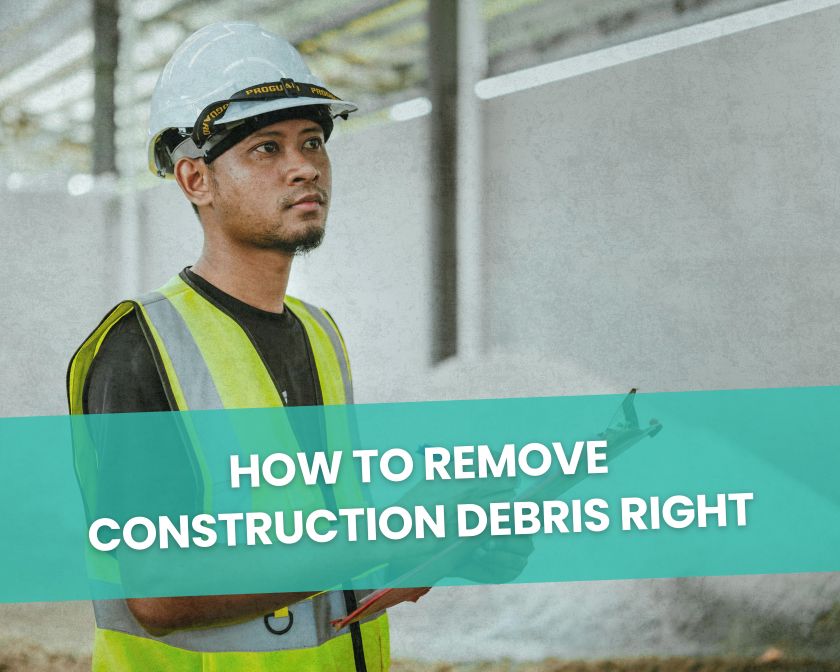Stay Ahead: Why Inventory Liquidation is the Future’s Choice
Imagine a bustling warehouse during the holiday season. Shelves are stacked high with products, each representing a potential sale. Fast forward to the post-holiday period, and the scene changes dramatically. Rows upon rows of unsold items, representing not just lost sales, but also a logistical challenge. Dive into the world of inventory liquidation and discover how businesses are navigating this complex landscape.
As online shopping continues to grow, warehouses are adapting to 24/7 operations and strategic placement near urban centers to facilitate rapid deliveries. This new dynamic has transformed the traditional warehouse model, now requiring smarter, faster, and more flexible operations to keep pace with the demands of e-commerce[1].
According to the National Retail Federation, American consumers were expected to return a staggering $171 billion worth of merchandise in 2023, leading to $816 billion in lost sales for retailers.
This paints a vivid picture of the challenges businesses face with excess inventory. But what if there was a silver lining? A more efficient way to turn this challenge into an opportunity?
Table of Contents
What is the Concept of Liquidation? – Beyond the Basics
Liquidation is not just about selling off assets, it’s about optimizing profitability and turning challenges into opportunities. In the realm of inventory, it’s about managing surplus stock effectively.
What is Liquidated Inventory?
Liquidated stock inventory refers to products that businesses need to sell quickly, often at reduced prices. Reasons can range from overstocking, seasonal changes, or products becoming outdated. The aim is to free up storage space and recover some of the invested capital.
For instance, after the holiday season, many retailers face a surge in returns. The cost and time associated with inspecting, repackaging, and restocking these items can be overwhelming, making liquidation a viable option.
What is Liquidation in Commerce?
In today’s commerce landscape, liquidation is more than just selling off excess stock; it’s an essential strategy in managing the nuances of e-commerce inventory. The transition to handling individual and small batch orders has necessitated efficient strategies for dealing with overstock and returns. Significantly, about 22% of online purchases end up being returned, posing a unique challenge for inventory management and making liquidation a crucial aspect of the e-commerce operation[2].
This influx of returned items, especially those in “Used-Good” condition, presents a significant challenge for businesses.
What is Liquidation Process?
The liquidation process involves several steps:
- Assessment: Evaluating the inventory to determine its value.
- Identification of Channels: Deciding whether to sell through clearance sales, auctions, or third-party liquidators.
- Pricing Strategy: Setting prices that are attractive to buyers while minimizing losses.
- Sales Execution: Managing the actual sale, which could involve negotiations, handling logistics, and ensuring timely payments.
What is a Liquidator in Inventory? – The Unsung Hero of Excess
Liquidators are the linchpins in the inventory management process, bridging the gap between businesses with excess stock and potential buyers.
What Do Liquidators Do?
Liquidators wear many hats. They assess the value of the inventory, identify potential buyers, and manage the sales process. Their expertise lies in understanding market demand, setting the right prices, and ensuring that the inventory moves quickly.
For instance, B-Stock, a prominent liquidation platform, works with 9 of the top 10 U.S. retailers, handling their excess and customer-returned inventory. They provide insights into trends across key product categories, helping businesses make informed decisions.
Who Can Act as Liquidator?
While any business or individual can act as a liquidator, specialized third-party companies often bring to the table a vast network and expertise. These companies have insights into market trends, buyer preferences, and pricing strategies, ensuring that the liquidation process is smooth and profitable.
What are the Types of Liquidator?
Liquidators can be categorized based on their specialization:
- FBA Liquidations: These specialize in customer-returned products from Amazon’s FBA program.
- Overstock Liquidators: They focus on selling excess stocks from retailers.
- Auction Houses: These entities sell inventory through auction processes, often attracting a wide range of buyers.
What is a Liquidation Company? – Behind the Corporate Veil
Liquidation companies are specialized entities that buy and sell overstocked, returned, or outdated products. They play a crucial role in the inventory management ecosystem, helping businesses offload excess stock and ensuring that products find a new home.
What is an example of a Liquidation Company?
B-Stock Solutions is a prime example. They partner with some of the world’s largest retailers, handling their excess and customer-returned inventory. Their platform provides insights into market trends, helping buyers make informed decisions.
For instance, their data shows that consumer electronics see a 25% increase in auctions in Q1 compared to other quarters, indicating a higher demand post-holidays.
Why is Liquidation Used?
Liquidation is used for several reasons:
- Freeing Up Storage Space: Excess inventory can occupy valuable warehouse space, leading to increased storage costs.
- Improving Cash Flow: Selling off excess stock can bring in much-needed cash, especially for businesses facing financial challenges.
- Reducing Financial Burden: Holding onto unsold inventory can tie up capital and result in depreciation costs.
Who Benefits from Liquidation?
Both sellers and buyers benefit from liquidation. Sellers can recover some of their investments, while buyers often get products at discounted rates. For instance, resellers can acquire off-season inventory at lower prices and then resell them when the items are in season, maximizing their profits.
What is Amazon Inventory Liquidation? – The Insider’s Guide
While many inventory liquidation companies have started to make their make their move, Amazon Inventory Liquidation multifaceted concept has garnered attention in the e-commerce world, especially among Amazon sellers. The giant e-commerce platform, Amazon, has its own mechanism to assist sellers in managing and liquidating their inventory, known as the FBA Liquidations program.
This program is designed to aid FBA sellers in recouping value from customer-returned products and excess stocks, providing a structured pathway to manage unsold items.
What Does Amazon Do with Unsold Inventory?
Amazon has developed strategies to deal with unsold inventory, one of which is the aforementioned FBA Liquidations program. This program allows sellers to liquidate inventory stored in Amazon’s fulfillment centers by selling it to third-party Inventory liquidators, who then sell the inventory to their customers.
This process helps sellers recover a portion of their inventory carrying costs while avoiding the need to handle the removal and subsequent disposal or resale of items.
Does Amazon Have a Liquidation Site?
While Amazon itself does not have a dedicated liquidation site, it does facilitate the liquidation process through its FBA Liquidations program. Additionally, there are various external platforms and companies that assist sellers in liquidating their Amazon inventory, providing alternative avenues to manage excess stock effectively.
Why Amazon Destroys Unsold Products?
The notion of Amazon destroying unsold products has been a topic of controversy and is often tied to the challenges related to managing excess inventory. While the exact reasons can be multifaceted, it often boils down to cost-effectiveness and space management within fulfillment centers.
The disposal of unsold goods, while not the most sustainable approach, sometimes becomes a chosen strategy to manage storage space and reduce holding costs.
Why Liquidate Inventory? – The Hidden Advantages Revealed
Liquidating inventory, especially in the context of e-commerce platforms like Amazon, is not merely a strategy to manage excess stock. It’s a nuanced approach that intertwines financial management, storage logistics, and market dynamics[2].
What is Risk of Liquidation?
Liquidation is an essential part of the warehousing strategy in the age of e-commerce. Warehouses must adopt new technologies and operational strategies to manage the continuous flow of goods and returns effectively.
This includes the necessity for 24/7 operations, a direct response to the demands of online shopping. Liquidation plays a key role in this context, ensuring efficient space and inventory management amidst the fast-paced e-commerce environment.
What are the Rules of Liquidation?
Liquidation, especially in a structured marketplace like Amazon, is governed by a set of rules and guidelines. These can encompass aspects like the condition of goods eligible for liquidation, pricing strategies, and compliance with legal and environmental regulations. Adhering to these rules is pivotal to ensuring a smooth and lawful liquidation process.
Who are Liquidators of a Company?
Liquidators play a crucial role in the inventory management ecosystem. They are entities or individuals who purchase unsold inventory from sellers, often at a discounted rate, with the intention of reselling the goods through various channels.
Product Liquidators help sellers recoup some of their costs and manage excess inventory, while also providing them with an opportunity to access goods at reduced prices for resale.
Happen Ventures: A Visionary Alternative to Traditional Liquidation
While the reasons for liquidating inventory are varied and often compelling, there exists an alternative that offers both financial benefits and a positive societal impact. Enter Happen Ventures.
Happen Ventures is not just another liquidation solution. It’s a beneficial reuse company that offers a sustainable alternative to traditional inventory liquidation. Instead of merely selling off excess stock for pennies on the dollar, Happen Ventures redirects unwanted inventory to communities in dire need.
This approach not only promotes sustainability but also allows companies to generate higher value for their inventory by claiming tax benefits up to the Fair Market Value of their merchandise.
With Happen Ventures, businesses can:
- Rapidly Clear Inventory: Unlike traditional liquidation that can take months, Happen Ventures offers a fast and efficient process.
- Connect with Communities: It’s not just about clearing stock, it’s about making a meaningful difference in communities that need support.
- Achieve Economic Sensibility: Receive Fair Market Value in tax deductions, ensuring that businesses get the best value for their inventory.
- Reduce Warehouse Costs: With a swift process, businesses can save on storage costs and free up valuable warehouse space.
By choosing Happen Ventures, businesses are not only making a financially sound decision but are also contributing to a larger, more meaningful cause. It’s where sustainability, social responsibility, and cost savings intersect seamlessly.
How Do You Sell Excess Inventory? – Secrets of the Trade
Selling excess inventory is an art that demands strategic planning, market insight, and a robust understanding of buyer behavior. From running flash sales and joining programs like Amazon Outlet to utilizing liquidation programs and creating removal orders on Amazon, sellers explore various avenues to manage and sell their excess inventory.
What Happens When There is Excess Inventory?
Excess inventory can lead to a myriad of challenges, including increased storage costs, tied-up capital, and potential brand devaluation. It necessitates strategic management to ensure that the excess stock does not adversely impact the business’s operational and financial health.
Is Excess Inventory Good?
While having a buffer can be beneficial, especially in industries with fluctuating demand, excessive inventory can be detrimental. It can lead to increased costs, reduced profitability, and potential brand damage.
How is Excess Inventory Removed from the Supply Chain?
There are several strategies to remove excess inventory:
- Clearance Sales: Offering products at discounted prices to clear out stock.
- Auctions: Selling products to the highest bidder, often attracting a wide range of buyers.
- Partnerships with Liquidators: Collaborating with third-party liquidators to offload excess stock.
What is Bulk Liquidation? – The Big Picture Strategy
In the realm of commerce, Bulk Liquidation is a term that has garnered significant attention, especially among retailers and e-commerce platforms. It refers to the process where businesses sell their products in large quantities or “bulk” to liquidation companies or directly to retailers at a price that is significantly lower than the retail price.
This often occurs when businesses need to free up warehouse space or quickly generate cash. According to Direct Liquidation, a B2B liquidation marketplace, businesses can bid on pallets and truckloads of surplus merchandise from top US retailers in online auctions.
Similarly, BULQ provides a platform for dealing with closeout and excess inventory from top retailers, offering guaranteed manifests and full-service shipping.
What is Liquidation Overstock?
Liquidation overstock refers to items that were not sold and have been overproduced, returned by customers, or are out of season. These items are often sold in bulk to liquidation resellers, who then sell them to the public or other businesses at significantly reduced prices. The concept is to prevent wastage and recover as much capital as possible from unsold items.
What is Collection Liquidation?
Collection liquidation is a term often used to describe the process of selling off a collection of items, typically in a bulk format. This could be a collection of anything from books, toys, apparel, or any other items that are similar or related in some way. The goal here is to quickly sell off items, often below market value, to ensure a speedy recovery of funds and efficient clearance of stock.
What is the Meaning of Liquidation Services?
Liquidation services refer to the professional services offered by liquidation companies to assist businesses in selling their excess inventory in bulk. These services might include purchasing overstock, managing liquidation auctions, and handling the logistics of storing and shipping bulk items.
For instance, Liquidation.com provides a comprehensive source of wholesale fashion, electronics, and home improvement items, facilitating businesses to get the best deals near their location.
The Final Take
The concept of liquidation, particularly in the context of Amazon inventory and bulk liquidation, is multifaceted. It’s not merely a strategy to mitigate losses but also a viable business model for various stakeholders in the retail and e-commerce sectors. The advent of numerous online platforms and liquidation services has streamlined the process, making it more accessible and transparent for businesses of all sizes.
However, the traditional path of commercial liquidation, despite its apparent immediacy and financial recovery aspects, often overlooks the potential wastage and environmental impact. This is where the concept of Beneficial Reuse, as practiced by Happen Ventures, comes into play, providing a sustainable and socially responsible alternative.
References:
[1] Hopstack. (2023). “Supply chain strategies for E-commerce.”
[2] Floship. (2020). “Understanding The Impacts of eCommerce On Warehouse Operations.”











